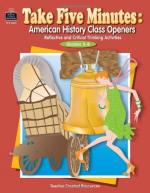|
This section contains 434 words (approx. 2 pages at 300 words per page) |

|
American literature thrived in the 1960s, helped along by a culture that valued thinking—especially the thinking of young people who questioned the values of adults. A number of individuals who are now considered among America's best writers placed novels on the bestseller lists, including William Faulkner (1897–1962) with The Reivers (1962), Saul Bellow (1915–) with Herzog (1964), Truman Capote (1924–1984) with In Cold Blood (1966), and Kurt Vonnegut Jr. (1922–) with Slaughterhouse Five (1969). Not all Americans were fond of such serious literature, however, and many turned to lighter fare. Other best-sellers in the decade included the James Bond novels by Ian Fleming (1908–1964), Hotel (1965) and Airport (1968) by Arthur Hailey (1920–), and Valley of the Dolls (1966) by Jacqueline Susann (1921–1974). These "trashier" novels were often made into popular films, a trend that grew increasingly prevalent in the 1960s. Among the surprise hits of the decade were To Kill a Mockingbird (1960), a powerful story of...
|
This section contains 434 words (approx. 2 pages at 300 words per page) |

|



